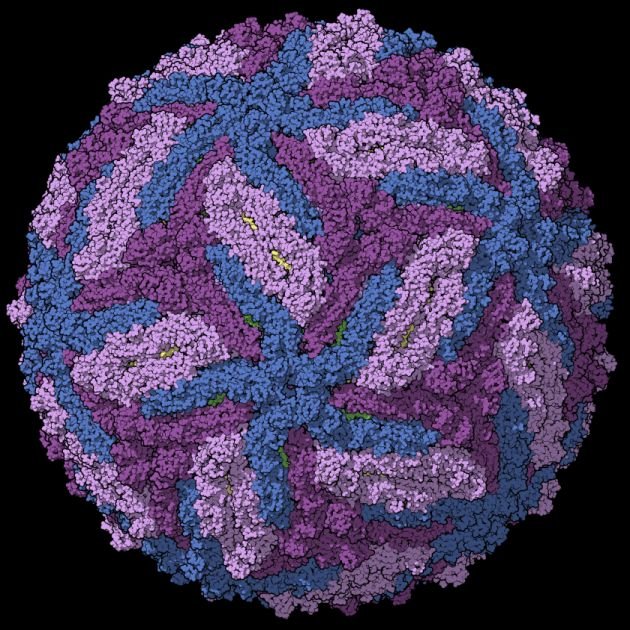World Community Grid: OpenZika Project
The Zika virus is a member of the flaviviradae family and is related to other mosquito-borne viruses such as yellow fever, dengue, Japanese encephalitis, and West Nile viruses. Although first isolated in 1947, the virus managed to stay under the radar until the 2015-2016 epidemic when it likely afflicted Brazil with numerous cases of microcephaly as well as Guillain–Barré syndrome. In all, there were a reported 3,500 cases of microcephaly reported between October 2015 and January 2016 with an estimated 1.5 million total cases of Zika virus infection. Microcephaly is a major cause for concern as it may lead to developmental defects within the brains and nervous systems of infants, leading to lifelong disability. To date there are no proven treatments or vaccines for treatment or prevention of Zika virus infection. The only treatment is the use of paracetemol (acetaminophen) which is recommended for treatment of symptoms but has no effect on viral replication.

Zika virus capsid model
Credit: Manuel Almagro Rivas
As such Zika is a major public health concern, with the World Health Organization referring to the virus as "a highly significant and a long-term problem". Of additional concern is the fact that the virus has many routes of transmission. Although the primary route of transmission is via Aedes aegypti and Aedes albopictus mosquitoes, the virus can also spread vertically from mother to unborn child, via sex, via blood transfusion, making any type of long term control of the virus all but impossible.
Mechanisms of Zika Virus spread
Credit: CDC
Thus therapeutics to fight Zika virus infection are highly needed, not to mention vaccines to prevent infection from occurring in the first place. This is where a project such as the World Community Grid project Open Zika comes in [1], which aims to identify drug compounds that are able to bind to viral proteins and thereby inactivate them or render them ineffective for viral replication or infection. The project sends out thousands of tasks to be completed onto a distributed network of computers via BOINC to simulate the binding or "docking" of a library of compounds with Zika virus proteins. The ZINC compound library used for OpenZika contains over 6 million compounds so it seems likely that at least a few will show promise.
OpenZika Workflow
Credit: Sean Ekins, et al. [1]
By pre-screening a library of compounds via computational docking methods, the likelihood of finding an effective compound against Zika virus is greatly increased. As of August 16, 2016, over 894 million docking jobs were submitted. At this point, as of Dec 2017, the number is probably far higher. The trouble is moving onto the next step, where these compounds must be synthesized and tested in actual experimental models (ie, petri dish studies). However, without the vast computational resources brought to bear with an army of BOINC volunteers, we would likely be much further away from a Zika anti-viral than we are currently. So let's keeping on BOINC'ing, earning Gridcoin, and we can get closer and closer to our goal of treating this disease.
References
[1] Ekins, S., Perryman, A. L., & Horta Andrade, C. (2016). OpenZika: An IBM World Community Grid Project to Accelerate Zika Virus Drug Discovery. PLoS Neglected Tropical Diseases, 10(10), e0005023. http://doi.org/10.1371/journal.pntd.0005023
